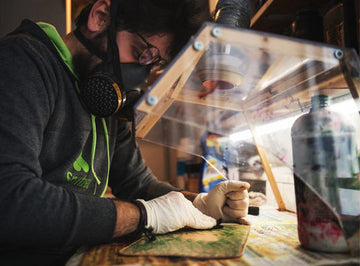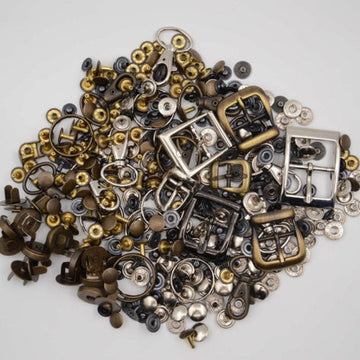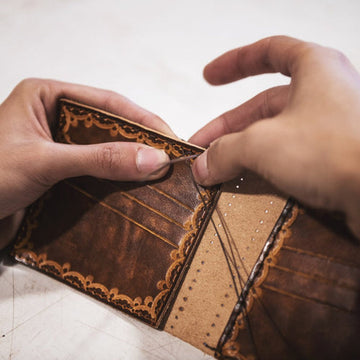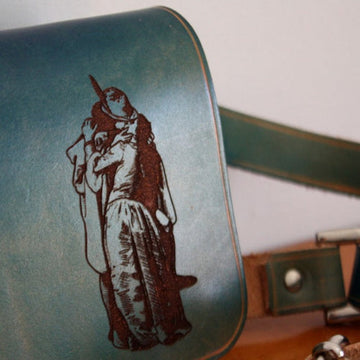By following the various work steps, we learned how to design an article, how to cut the necessary pieces of leather and how to decorate it with meticulous engravings. The time has come to color our leather article!
Step four: coloring.
For this process, strong colors are used, specific products for coloring leather, so that they are better absorbed by the cloth. The leather will be colored with the help of a rag, preferably cotton, or with a sponge, depending on the shade you want to obtain.
It is good to know that there are some precautions to consider essential for your health. You must absolutely wear a mask that filters the air and use an extractor hood. Your hands must be protected by cotton gloves in contact with the skin, and latex gloves over the cotton ones.
Once all the necessary precautions have been taken, we move on to the work.

The cotton cloth is wet with the dye solution, and the leather surface is rubbed. Initially, it is rubbed with a light touch, almost caressing, until a certain friction is felt; this is the sign that the leather has absorbed the color.
This job requires a precise hand, which does not cause smudges, or you risk losing the entire product.
If you want to obtain a particular color or shade, the problem does not exist. As in all other artistic works that include coloring, even with the pregnant colors for leather it will be enough to mix various products until you obtain the chosen shade.
Even the coloring leaves room for different fantasies. By dabbing the color for example you can obtain different shading effects. For a uniform application instead, the coloring will be done with light pressure of the soaked cotton cloth.

In coloring, the first coat will be a test, both for the color and for any coloring defects. The second coat will be the confirmation of the first, which will cover less colored areas, but will be more difficult to apply: the leather has in fact already absorbed the first coat of color, and will be almost waterproof.
You will need to apply more pressure on the colouring cloth, without pressing too hard, or you may end up with smudges or shades that are too dark.
Good coloring always comes with good practice in discharging the color onto an absorbent surface. It is a balance that is achieved only with practice.





